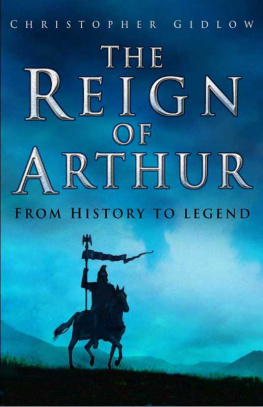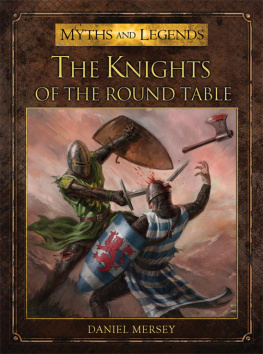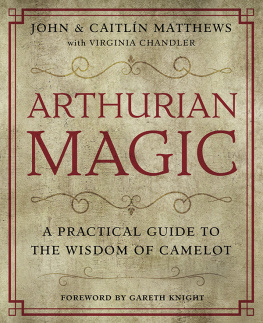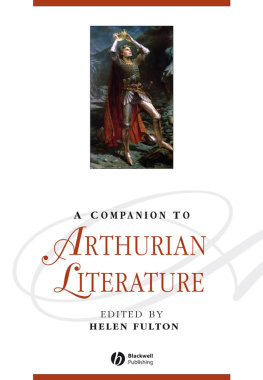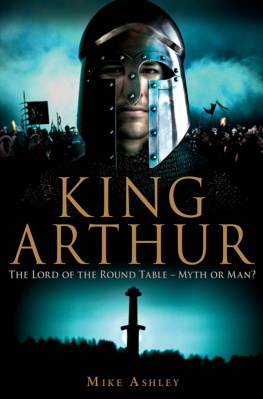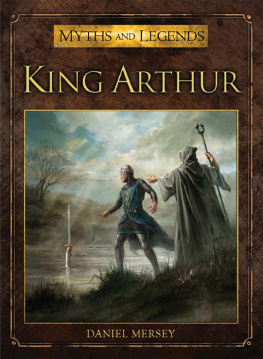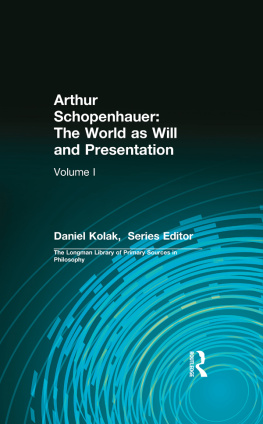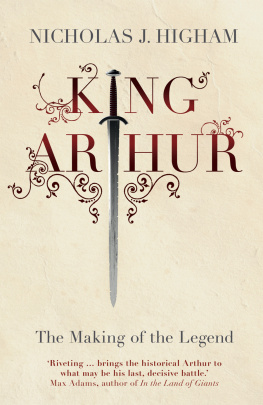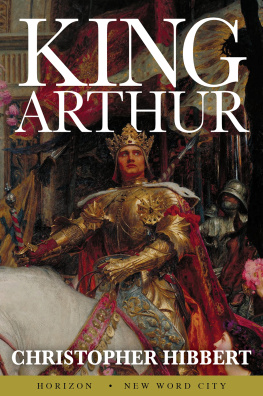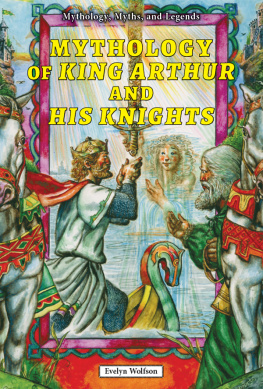To The Oxford Arthurian Society, without which...
First published in 2004 by Sutton Publishing
This paperback edition first published in 2005
Reprinted in 2010 by
The History Press
The Mill, Brimscombe Port
Stroud, Gloucestershire, GL5 2QG
www.thehistorypress.co.uk
This ebook edition first published in 2013
All rights reserved
Christopher Gidlow, 2010, 2013
The right of Christopher Gidlow to be identified as the Author of this work has been asserted in accordance with the Copyrights, Designs and Patents Act 1988.
This ebook is copyright material and must not be copied, reproduced, transferred, distributed, leased, licensed or publicly performed or used in any way except as specifically permitted in writing by the publishers, as allowed under the terms and conditions under which it was purchased or as strictly permitted by applicable copyright law. Any unauthorised distribution or use of this text may be a direct infringement of the authors and publishers rights, and those responsible may be liable in law accordingly.
EPUB ISBN 978 0 7524 9515 6
Original typesetting by The History Press


MAPS

M any thanks to all those who helped me on the long route to The Reign of Arthur. Special thanks must go to Andrew Smith, for his persuasive suggestions, eye for detail and help with tricky translations, and also for permission to use his research on the press coverage of the Artognou stone. Thanks, too, to the numerous members of the Oxford Arthurian Society, especially Peter Ewing, whose thought-provoking talks raised many of the ideas tackled here. Dr Jeremy Catto, Dr Nick Higham and Charles Evans-Gnther gave help and support when this book was still in its infancy. I should also like to thank my wife Julie, our son Geheris and my parents Alan and Valerie for, among other things, our intrepid expeditions to most of the obscure Arthurian locations mentioned in this book. Lastly, I should mention my primary school teacher Keith Moxon, who first introduced me to the dark-age historical context of the Arthurian Legends of which I was so fond. It was that encouragement which, ultimately, led to this book being written.
Unless otherwise stated, the images in this book are Julie Hudson, and are used with permission. The extract on , the estate of Lewis Thorpe 1978, are reproduced by permission of Penguin Books Ltd.
The quotation from Malorys Le Morte Darthur is taken from Vinaver, A., Malory Works (OUP, 1971). It is reprinted by permission of Oxford University Press. The quotation from Myres, J.N.L., The English Settlements (OUP, 1986), is also reproduced by permission of Oxford University Press.
Unless otherwise noted, extracts from Historia Brittonum are reproduced by kind permission from Arthurian Period Sources volume 8, Nennius (ed. and trans. by Dr John Morris) published in 1980 by Phillimore, Shopwyke Manor Barn, Chichester, West Sussex, PO20 2BG.
Quotations from Gildas are reproduced by kind permission from Arthurian Period Sources, volume 7, Gildas (ed. and trans. by Michael Winterbottom), published in 1978 by Phillimore, as above.

A rthur was a great king. He ruled a land of knights in armour, damsels in distress, dragons and derring-do, home of Merlin the Magician and Morgan le Fay. He was born in Tintagel, became king by a combination of sword, stone and sorcery, and ruled from the castle of Camelot. At his Round Table sat Sir Lancelot, Sir Gawain and Sir Galahad, seekers of the Holy Grail. Finally, in tragedy, the love of Lancelot and Guenevere brought down the whole kingdom, leaving Arthur sleeping in the Isle of Avalon.
Did this King Arthur really exist? Almost certainly not. He was defined by writers of romance fiction in the twelfth century and refined through the Middle Ages. He inhabited a fabulous world based on that of his medieval audience. It was in this form that Arthur was revived by the Victorians and entered the public imagination.
Could this fantastic king be based on historical reality? By the late twentieth century, scholars reached a consensus. Through the legends, they argued, could be glimpsed a genuine historical Arthur. Perhaps he was not a king but a warlord, a Roman general or Celtic chieftain, leading his armoured cavalry against invading Saxons. He fought battles at such windswept locations as Liddington Castle or Little Solsbury Hill. His capital, a declining Roman city or reclaimed hillfort, remembered by the name of Camelot, could be identified by archaeology. His world, if not exactly one of chivalry, was a last beacon of civilisation against a barbarian wind of change.
This image of the historical Arthur found its way easily into popular history. Professional historians were soon followed by amateur enthusiasts and local antiquarians. Regional partisans still traipse across their local fields, clutching Ordnance Survey maps, seeking names resonant of Camelot and Avalon.
According to the medieval Prophecies of Merlin, the deeds of King Arthur would always provide food for storytellers. The number of new Arthurian novels, each longer than all the early Arthurian sources combined, appears to bear this out. Although in the mass media the name of Arthur will always evoke the image of knights in armour, most novels since the sixties have cloaked their Arthur in the muddy trappings of the Dark Ages. This new fictional Arthur has become subtly different from his historical counter-part. He emerges from a Celtic twilight into a world where the old ways face the destructive coming of the Church of Rome. While Arthur may be ambivalent in this contest, there is no disguising the old loyalties of the powerful women surrounding him, exponents of a matriarchal tradition stretching back to Boadicea and the Druids. Inevitably, there is love between the Queen and a Lancelot-figure, there is a grail, holy to one tradition or another, an Avalon where Christian and pagan battle for the hearts and minds of Dark Age Britain.
But are these Dark Age Arthurs any more real than the medieval figure which preceded them? Over the last twenty-five years, the academic world has become almost unanimously hostile to the idea of a historical Arthur. It has become scholarly orthodoxy that, although someone called Arthur may have existed at some point in the Dark Ages, even that small admission is best avoided. The first mentions of him were written hundreds of years after he supposedly lived and are so hopelessly entangled in myth and folklore that nothing historical can be gleaned from them. Sources from his own time make no mention of him, archaeology has uncovered no trace of him, so it is best to ignore him completely.
This sea-change in scholarly opinion has taken place largely out of public view. It has hardly entered into popular histories. The public demand for Arthurian books has been fed by reprints of old and discredited works, or poorly researched amateur sleuthing of the King Arthur shared my post-code variety.

